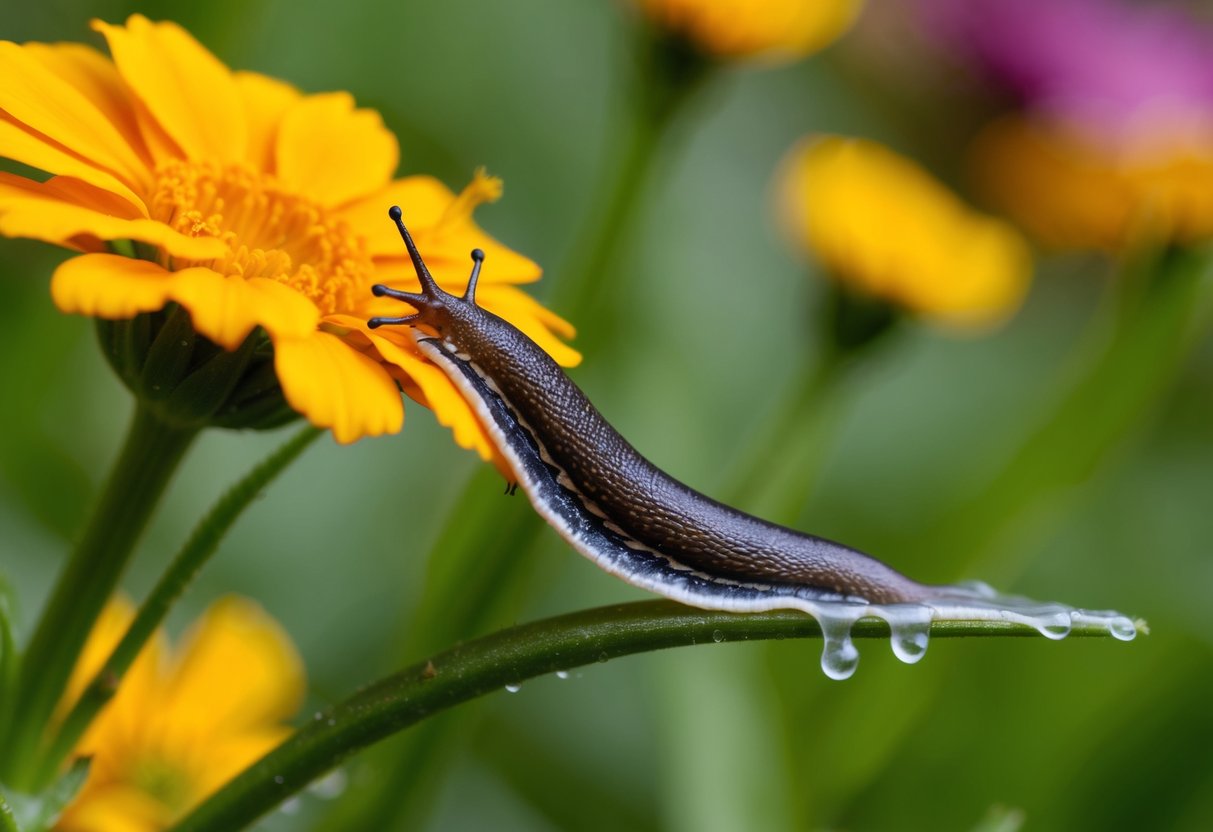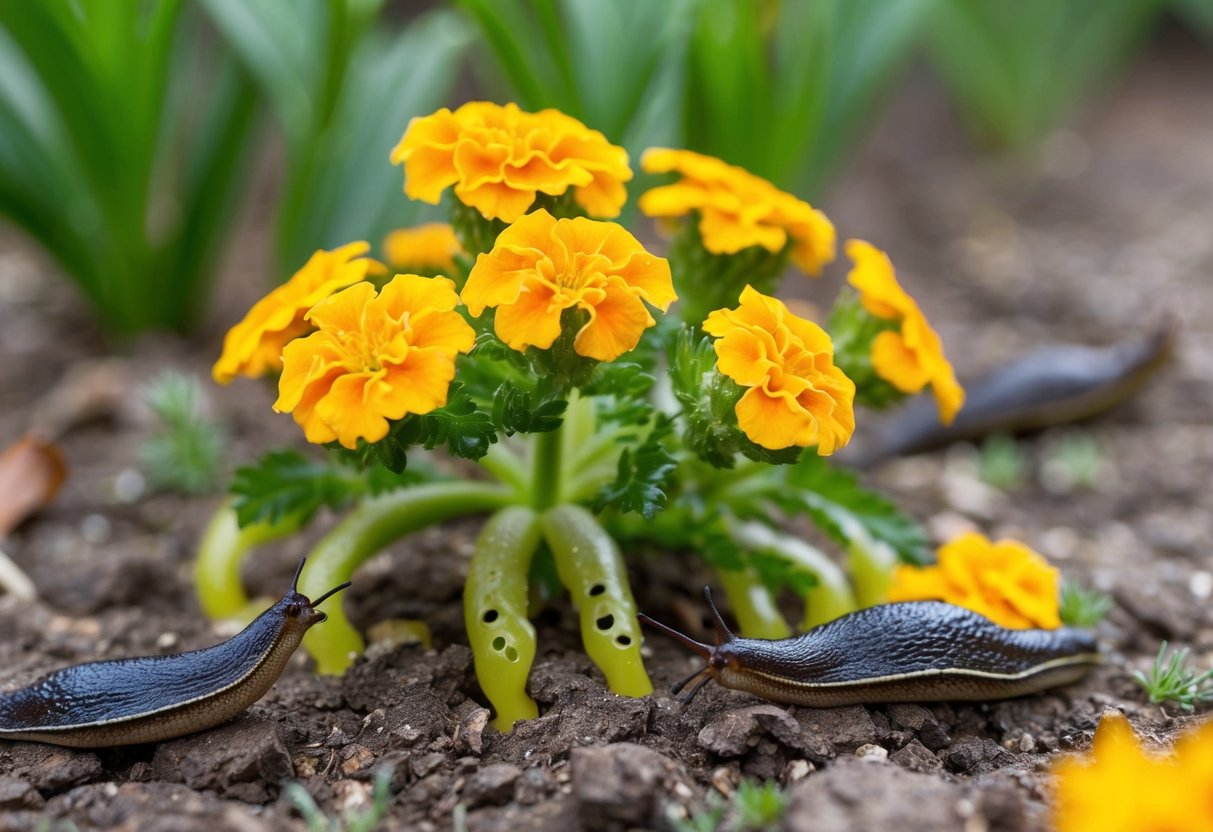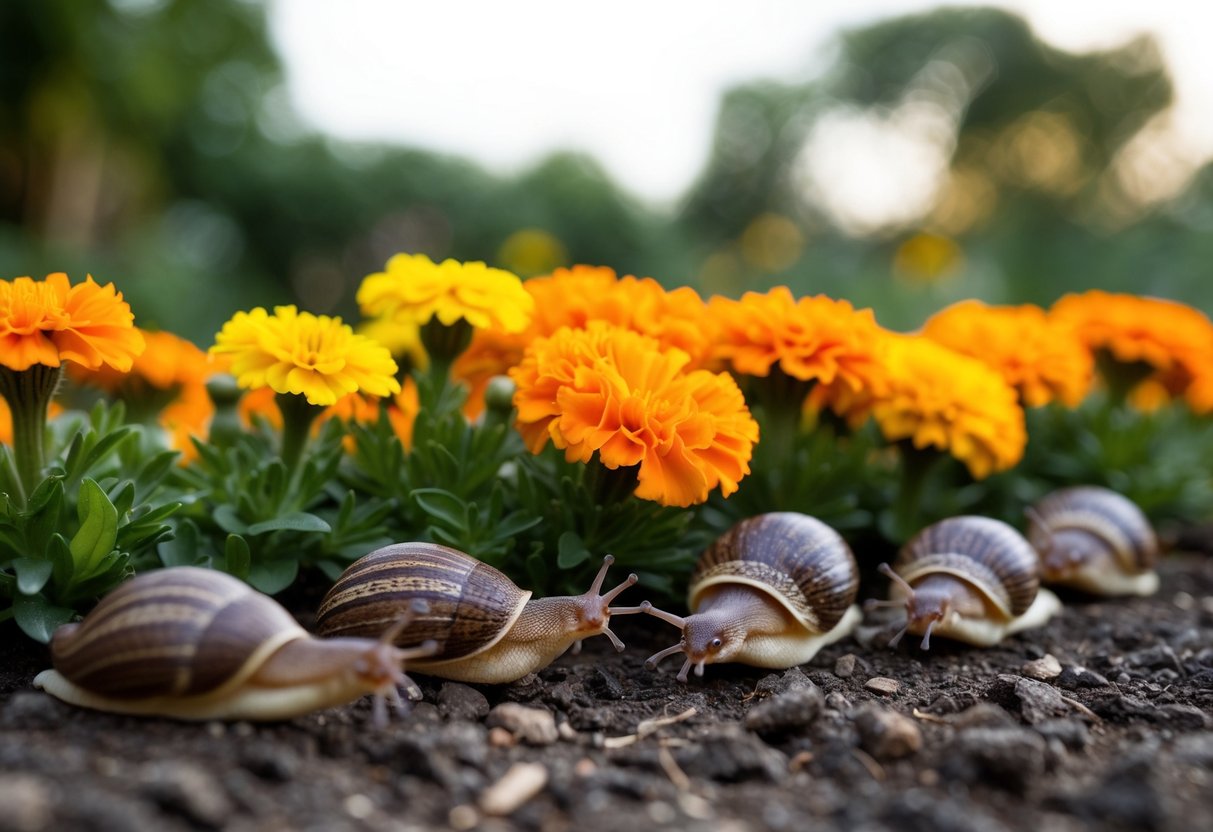Do Slugs Eat Marigolds? Tips for Protecting Your Flowers
If you love gardening, you might have noticed pesky little visitors munching on your plants. One common question is whether slugs eat marigolds. Yes, slugs do eat marigolds, and they actually seem to enjoy them quite a bit. These vibrant flowers can serve as an attractive snack for these slimy garden pests, especially the tender leaves of young marigold plants.

Don’t let this deter you from planting marigolds as they have other benefits too. In fact, marigolds can be used strategically in the garden. Some gardeners use them as a trap crop to divert slugs away from more valuable plants. This way, you can control slug activity while still enjoying the beauty marigolds bring to your outdoor space.
Stay tuned as we delve deeper into methods to protect your marigolds. From simple household solutions to eco-friendly tricks, there are ways to keep these critters at bay. Understanding how to manage these garden pests can help ensure your marigolds thrive and add color to your garden.
Understanding Slugs and Marigolds

Slugs are often attracted to gardens, seeking out delicious plants like marigolds. These creatures have specific habitat and diet preferences. Not all marigold varieties attract slugs equally; some are more appealing than others. Knowing what slugs prefer can help you manage their presence in your garden.
Natural Habitat and Diet Preferences
Slugs thrive in damp and shady places. They need moisture to survive as they lose water quickly through their skin. You often find them in gardens with thick mulch or dense foliage, especially after rainfall or in the early morning.
These pests feed on a wide range of plants. They have a liking for tender and young leaves. They eat lettuce, basil, and other leafy greens. In your garden ecosystem, slugs play a role by breaking down decomposing materials. This natural activity helps amend the soil.
To deter them from sensitive areas, you might try barriers made of copper strips or crushed eggshells. Hand-picking is another eco-friendly option if slug numbers are small. Monitoring their habits can keep your plants safer.
Marigold Varieties and Slug Attractiveness
Different marigold varieties can attract slugs in varying degrees. French marigolds are known for their compact and bushy form. These marigolds emit a strong scent and often attract slugs to their tender leaves. They can serve as a trap crop, drawing slugs away from more valuable plants.
African marigolds, on the other hand, are taller with bigger blooms. They may not always be as appealing to slugs. Their robust foliage can be less vulnerable.
If you prefer not to draw slugs into your garden, choosing marigold varieties with thicker foliage could help. Consider sprinkling coffee grounds around your plants as slugs find this a deterrent. Another tactic is using beer traps, which lure and trap them effectively.
Identifying Slug Damage

When slugs invade your marigolds, they can cause noticeable damage. Spotting signs early can help protect your plants from these pesky pests. It’s important to distinguish slug damage from other garden invaders to effectively deal with the problem.
Signs of Slug Presence
One of the first signs of slugs in your garden is slimy trails. These trails shine in the light and can usually be found on the soil or across the leaves of your marigolds.
In addition to slime trails, you might notice irregular holes in the leaves. Slugs tend to munch large, uneven holes in plants, especially overnight when they are most active. Keep an eye out for these signs after rainy days or in damp conditions, as slugs prefer moisture.
Checking for these clues can help you quickly identify a slug problem.
Slug Damage Versus Other Pests
It’s key to know that other pests can also damage marigolds. Unlike slugs, snails leave similar trails and holes but tend to have rounder holes due to their slightly different feeding patterns.
Other insects, like caterpillars, can also eat plants. Unlike the large irregular holes from slugs, caterpillar damage can appear as smaller, more uniform bites.
By looking closely at the patterns and type of damage, you can tell if slugs are the culprits. Knowing these differences helps you choose the right method to protect your marigolds.
Preventive Measures and Solutions

Keeping slugs away from your marigolds can be more manageable with natural methods. Encouraging beneficial insects and using companion plants are effective ways to protect your garden.
Cultivating a Natural Predator Environment
Introducing natural predators into your garden is a great way to control slug populations. You can attract animals like frogs, toads, and birds by providing suitable habitats. This might include small ponds or birdhouses.
Another way to invite slug-eating creatures is by encouraging beneficial insects. Ground beetles, for example, naturally keep slug numbers down. Consider planting ground covers or trap plants to create a welcoming environment for these insects.
A biodiverse garden not only helps manage slugs but also supports ecological balance, reducing the need for chemical interventions.
Companion Planting Strategies
Companion planting is an effective strategy to deter slugs while promoting plant health. Planting herbs like rosemary or sage near your marigolds can repel slugs with their strong scents. These herbs also enhance the flavors of other garden vegetables.
Using slug repellents made from crushed eggshells or coffee grounds can create a barrier around your marigolds. They make it uncomfortable for slugs to reach the plants.
Selecting trap plants like hostas or lettuce can lure slugs away from your precious flowers. Though sacrificial, these plants help divert slugs and keep your marigolds safe. Using these techniques will likely improve your garden’s overall resilience.
Organic and Physical Control Methods

Keeping slugs away from your marigolds can be achieved using both organic and physical methods. You can create barriers with materials like copper or use natural repellents to protect your garden.
Creating Barriers with Copper and Other Materials
Copper is an effective way to deter slugs. You can wrap copper tape around the base of your marigold plants. When slugs touch the copper, it gives them a mild shock, which they find unpleasant.
In addition to copper, using crushed eggshells or diatomaceous earth around plants can also act as barriers. These materials are rough and abrasive, making it difficult for slugs to move across them. Placing mulch or wood ashes can also help keep slugs at bay, although regular application is needed to maintain effectiveness.
Natural Repellents and Homemade Solutions
Using natural repellents like coffee grounds can be a beneficial approach. The caffeine content is toxic to slugs and can reduce their population over time. Simply sprinkle used coffee grounds around your marigold plants for a simple but effective repellent.
Another homemade option involves using a garlic or vinegar spray to discourage slugs. These sprays can be made by mixing garlic or vinegar with water and spraying it on the foliage. Be cautious with vinegar, as too much can harm plants. By using these natural methods, you can manage slug activity without resorting to synthetic chemicals.
Maintaining the Garden to Deter Slugs

To keep slugs away from your garden, you can focus on how you water your plants and set traps effectively. These methods help prevent slug infestations by creating less inviting conditions.
Optimizing Watering Techniques and Plant Placement
Water your plants at the base, not over the foliage. This keeps leaves dry and makes the area less attractive to slugs. Morning is the best time to water.
Avoid overwatering, as too much moisture can attract slugs. Use raised beds to improve drainage, making it harder for slugs to thrive.
Consider planting marigolds and other slug-attracting plants away from vulnerable plants. Creating this barrier can help lure slugs away from more delicate foliage like lettuce or basil.
Utilizing Traps and Baits
One effective method is using slug traps. You can create beer traps by placing shallow dishes of beer near your marigolds. Slugs are attracted to the smell and end up drowning in the beer.
Another option is slug bait. Spread it sparingly around plants. Try eco-friendly baits to avoid harming other garden creatures.
Regularly check and empty traps to maintain their effectiveness. Placing traps at strategic spots, especially near vulnerable plants, enhances their efficiency in reducing slug populations.







